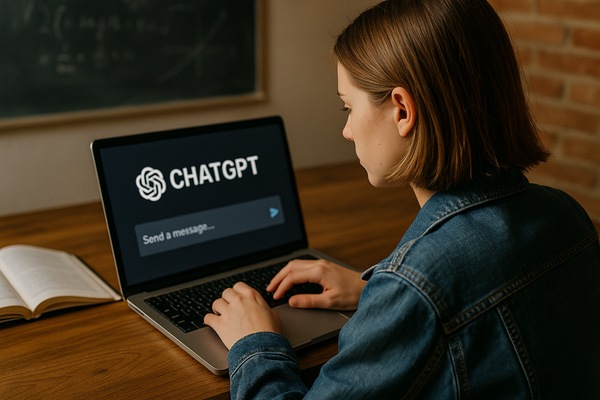Signs Your Child Is Over-Relying on ChatGPT for Learning
Let’s Call It What It Is
ChatGPT is impressive. Helpful, fast, shockingly articulate—and yes, a little addictive. For students, it’s like discovering a shortcut they didn’t know existed. Why brainstorm an essay when you can prompt one? Why wrestle with a tough assignment when a chatbot can spit out an answer in seconds?
But here’s where it gets murky: that convenience? It can quickly turn into dependence.
And if you’re a parent wondering whether your child is still learning—or just prompting—you’re not alone.
🚩 Sign #1: Their Work Feels… Off
You know your kid’s voice. You’ve read their writing. So if their latest assignment suddenly sounds like it was penned by a 38-year-old tech blogger with a master’s in metaphors… trust your gut.
One red flag teachers and parents are noticing? Essays that are grammatically perfect, weirdly generic, and totally detached. There’s no spark. No struggle. No trace of them.
🚩 Sign #2: They Can’t Explain What They “Wrote”
Ask them to walk you through their assignment—and if they fumble through vague summaries or avoid the question entirely, that’s telling.
Overreliance on ChatGPT often shows up when students can’t explain why they made a certain argument, how they chose their sources, or even what the main idea is. Because in many cases… they didn’t.
🚩 Sign #3: They Finish Complex Work Suspiciously Fast
Now, we’re not saying your child isn’t brilliant. But if a multi-paragraph analysis that usually takes hours is done before dinner—with no outline, no questions, and no complaints? That’s not just efficiency. That’s outsourcing.
🚩 Sign #4: There’s a Drop in Mental Engagement
They’re no longer asking follow-up questions. They’re not thinking through material. They just want to “get it done.”
The danger here isn’t just about cheating—it’s about disengagement. When AI does the heavy lifting, students lose the muscle memory of thinking deeply, connecting dots, and actually learning.
🚩 Sign #5: Their Grades Don’t Match Their Study Habits
If they’re barely reviewing material but pulling off polished, high-level submissions, something doesn’t add up. AI can help polish ideas—but if your child isn’t putting in the time, yet suddenly producing flawless work, it’s worth a deeper look.
So What Do You Do About It?
Good news: this isn’t a crisis. But it is a conversation.
Here’s how to handle it:
-
Get curious, not confrontational. Ask questions about their work. “What part of this essay was hardest to write?” or “How did you land on this argument?”
-
Talk about why struggle matters. Let them know it’s normal for writing to be hard. That wrestling with words is where the learning happens.
-
Help them use ChatGPT as a tool, not a crutch. Encourage them to use it for brainstorming, outlining, or feedback—not for writing start to finish.
-
Check in regularly. Not just for grades, but for comprehension. Can they explain concepts out loud? Can they think through a problem without the screen?
In Short?
ChatGPT isn’t the villain—but overuse can quietly steal your child’s chance to think, reflect, and grow.
So the goal isn’t to ban it. It’s to balance it.
When students use AI with their brains—not instead of them—they’ll not only learn more… they’ll learn how to learn. And that’s the skill they’ll carry far beyond the classroom.
Leave a comment :)
Comments will be approved before showing up.
Also in Isyourkidlazy.com

How ChatGPT in Education is Evolving
Discover how ChatGPT in education is changing learning—from personalized tutoring to smarter learning tools. Explore the impact of AI in classrooms and beyond.



Rachel Esco
Author